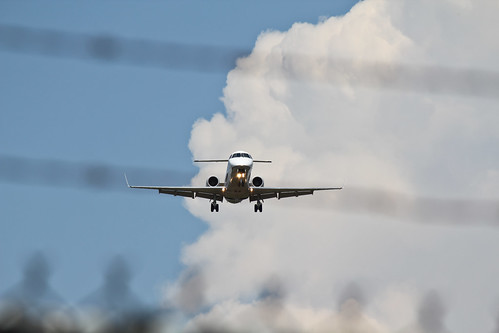
Texas Monthly’s recent piece, “Up in the Air” by Loren Steffy, has left me scratching my head. The by-line is “The 2010 sale of Continental Airlines has left Houston in a holding pattern” so I was expecting a look into dealings with the city or the airport. I braced myself for an investigative long-read.
The first two paragraphs focus on how terrible it was to lose Continental to the merger and then United to Chicago; How cultures are a problem.
As a management consultant, Heiland knew that the biggest hurdle for the two companies wouldn’t be integrating systems, processes, or technology but reconciling their cultures. “When it was announced that the headquarters would be in Chicago, I felt the war was lost.”
Then all of the sudden the article becomes a brief history of Continental. Details about former CEOs and what they did or didn’t do for the airline. All of it reads like a Wikipedia job. Then near the end there is some more meat.
And so, in 2010, Smisek struck a deal. Though he called it a merger, he basically sold Continental to United; the name “Continental” disappeared and the Houston headquarters was essentially vacated. Continental’s management team was supposed to be in charge, but it never took root in the cold climes of Chicago. “The Continental culture was a terrible thing to risk,” Bakes says. “United’s history is one of bureaucracy and arrogance, and it ended up culturally being more dominant.”
I get it, there are definite service issues with United. I’m not convinced it had anything to do with “culture” at either airline but more to do with the management not fostering a relationship with the front line staff and building trust. It has lead to distrust and unhappiness for the people who travelers see first and deal with most in their travels: flight attendants, agents, and other ground staff. Morale has been in the mud and it shows. The new CEO, Oscar Munoz, who is on medical leave due to a recent heart attack, mentioned the morale problems and customer service issues immediately after taking the job.
On another note, the part about the Houston offices being vacated is at best an oversight or at worst, poor research. There are a large number of employees who still work in downtown Houston. Just fly a Chicago-Houston morning flight or an evening Houston-Chicago flight, there are a lot of United employees commuting to or from the Houston office.
The whole article reads like a whine and never addresses the by-line. How is Houston in a holding pattern? If anything, United has helped the city before the merger and after. United has committed to paying for at least part of the renovations taking place at Terminal B and C at IAH. The airline also plays a crucial role in attracting other carriers to the city. Their membership in the Star Alliance means that other airlines can codeshare with them, drawing those carriers to offer service to airports where United is located to connect to surrounding cities. EVA, ANA, Singapore Airlines, Air China, Lufthansa and Avianca all offer service to IAH, building on the connections that United offers. And soon there will be a Houston-Auckland flight on Air New Zealand, another Star Alliance partner.
If United had truly left Houston in a holding pattern, it would have happened in a similar fashion to what they did to Cleveland or what Delta did to Cincinnati. Nostalgia is always fun to discuss and reminisce about, but the Texas Monthly article was far from that. I would have been much more of a fan had Texas Monthly found and licensed a bunch of old IAH and Continental photos and just told the history of the airline and the airport. Instead it was a let down.

